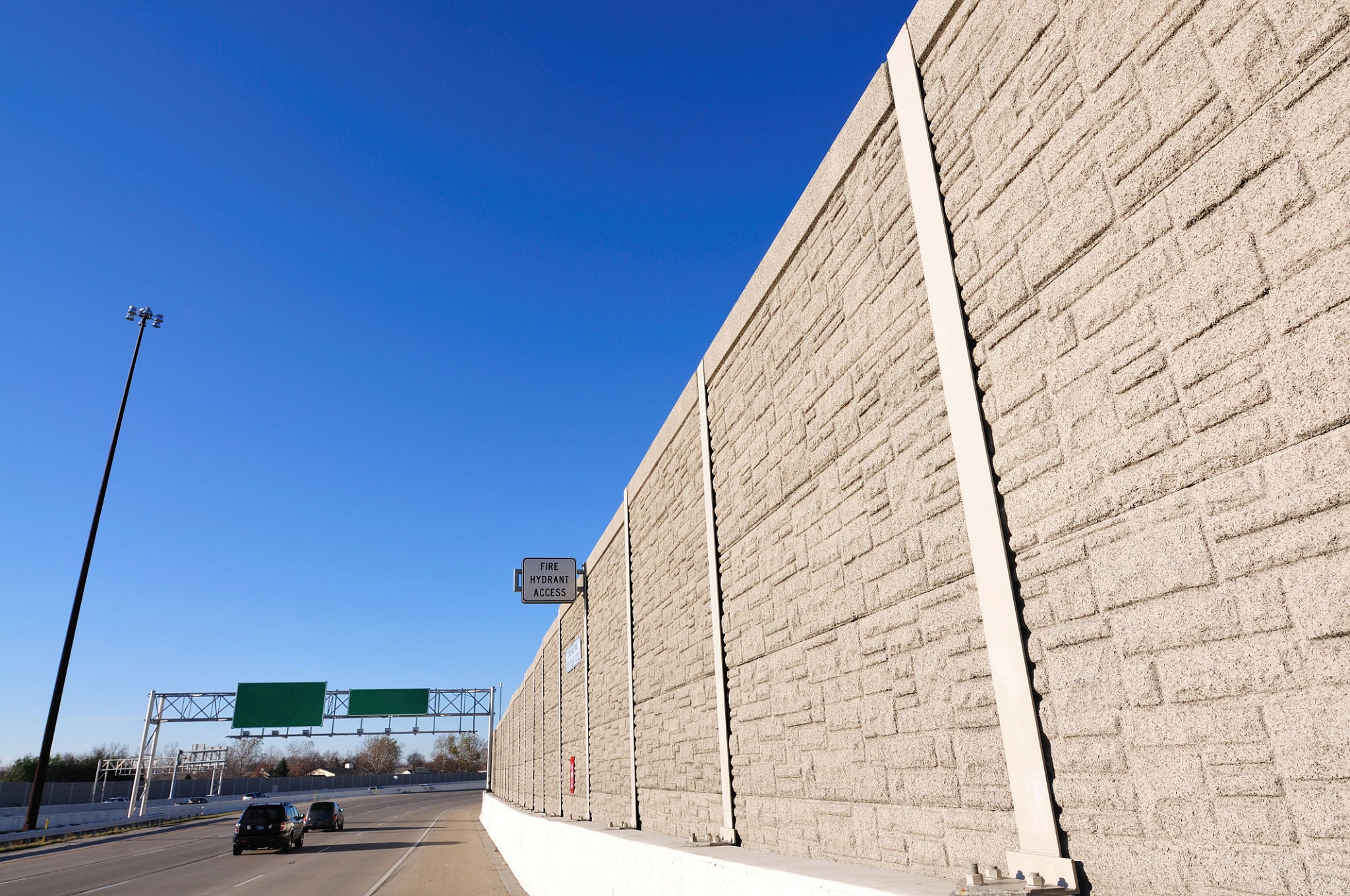Kate Investigates: What's Up With The Sperm Walls Of New Jersey
 carroteater. Getty Images.
carroteater. Getty Images.In 1963 the first ever traffic sound barrier was built in Washington State to protect residential neighborhoods from an endless barrage of vehicle noise. By the '70s there were Dept. of Transporation handbooks sharing what materials & designs worked best, and by the '90s there were 1,620 miles of sound barriers in 44 states across the country. Now they're everywhere.
That being said, the Federal Highway Administration emphasizes that if the public's tax money is going towards them, then the public wants them to be more than just functional; they need to look good, too.
According to Bob Armstrong, leader of the Noise Team in the Federal Highway Administration's (FHWA) Office of Natural and Human Environment, aesthetics are just as important—maybe even more important—than the noise reduction capacity of a barrier. "Many citizens," Armstrong says, "view an ugly barrier as a waste of time and money and are likely to say that it doesn't reduce noise."
Across the country, designers are involving the public in making decisions about the look and feel of existing and new barriers. Whether jagged, stepped, sloped, uniform, irregular, colored, plain, straight, curved, or textured, today's most aesthetically successful barriers reflect the local flavor of their communities and enhance the quality of the transportation environment.
Thus in California you'll see sound barriers etched with palm trees, New Orleans barriers dotted with flying pelicans, Oklahoma's designed with puzzle pieces, and New Jerseys… uh…
Sperm. I guess our local flavor is salty, bitter shrimp water?
Worth noting, the sperm walls caught my attention because they lined the sound barrier during almost the entire drive I had to take to my pregnancy ultrasound appointment. Fitting. Each sperm is like 100 feet long with a little sperm head on each end, so as you speed along it looks like a cartoon wriggling along with you.
And I'm not the only one who's noticed, as a quick keyword search revealed.




(On my Reddit post about the sperm walls, engineers even chimed in to say this particular design was so poor it likely made the sound worse. Who knows.)
There's even a "The Sperm Walls of New Jersey" YouTube video with intense music that drives the full length of a sperm on I-80 at regular speed and then slow motion so you can really absorb it.

As the FHA stated, design is KEY when building these things, so I have to wonder how miles of New Jersey highway got the thumbs up for, quite frankly, a lil jizz. Like there's absolutely no looking at that and thinking it's anything else, and I know it had to be approved by a ton of people who had to have thought, "Oh, that's sperm." I'm not mad about it in the least, just curious.
When I called the New Jersey Department of Transportation last week to ask them about it, the woman on the phone cracked up & said she was just grateful I wasn't calling to complain about the sperm. She also said she'd ask around and they'd get back to me, but I'm guessing that for PR reasons they can't tell me the tale of how taxpayer money covered that design.
Whatever the case, if you're cumming to New Jersey, be sure to wear protection (seatbelt) because you never know what you'll find on these highways. As for future NJDOT sound barriers I'd like to suggest tiny pork roll, egg & cheese sandwiches and Frank the Tank silhouettes.


